#CosmicDiscovery
Explore tagged Tumblr posts
Text
Discovery Alert! In a new discovery released on Jan 08, 2024 James Webb Telescope and Chandra Solve Cassiopeia A's Green Monster Riddle.
Discovery Alert! In a new discovery released on Jan 08, 2023 James Webb Telescope and Chandra Solve Cassiopeia A's Green Monster Riddle. Read more here

Dive into the celestial wonders of Cassiopeia A as NASA's James Webb Space Telescope and Chandra X-ray Observatory join forces to decode the enigma of the 'Green Monster.' 🌠✨ This collaboration has unveiled a mesmerizing image resembling an electric light show in space – think red clouds, glowing white streaks, fiery flames, and a central region that's practically a cosmic green lightning display. ⚡️💫
Chandra's X-rays in striking blue illuminate the hot gas, predominantly from the supernova debris, unveiling elements like silicon and iron. These elements form thin arcs in the outer reaches of the remnant, revealing the aftermath of a celestial explosion. 🌪️
Webb's infrared magic, painted in red, green, and blue, exposes the warmth of dust embedded in the hot gas seen by Chandra and the presence of cooler supernova debris. Meanwhile, the Hubble data adds a sprinkle of stars, turning this cosmic canvas into a dazzling tapestry. 🌈✨
Get ready to embark on a journey through the cosmos, where science meets art and the mysteries of Cassiopeia A are unraveled. 🌌💙 #WebbTelescope #ChandraObservatory #GreenMonsterMystery #CosmicDiscovery #SpaceArtistry
101 notes
·
View notes
Text
600 Million Years After the Big Bang: We discovered Firefly Sparkle galaxy | Researchatory.AI | Aakash Khurana
Imagine seeing the universe as it was just 600 million years after the Big Bang. Thanks to the James Webb Telescope, we can! This is 'Firefly Sparkle,' a small but mighty galaxy with star clusters that shine like cosmic fireflies, providing invaluable insights into early galaxy formation. #JamesWebbSpaceTelescope #JWST #Astronomy #Space #Galaxy #Cosmos #Universe #SpaceExploration #Astrophysics #FireflySparkle #EarlyUniverse #GalaxyFormation #WebbTelescope #CosmicDiscovery #SpaceFacts #ScienceNews #AmazingSpace
In essence, "Firefly Sparkle" is a window into the past, allowing us to witness the building blocks of galaxies as they came together.
For more info join our medium page. https://medium.com/@researchatory
#JamesWebbSpaceTelescope#JWST#Astronomy#Space#Galaxy#Cosmos#Universe#SpaceExploration#Astrophysics#FireflySparkle#EarlyUniverse#GalaxyFormation#WebbTelescope#CosmicDiscovery#SpaceFacts#ScienceNews#AmazingSpace
9 notes
·
View notes
Text
Officials confirmed on Monday that the metal item that crashed from the sky, tearing through the roof of a Naples, Florida, home last month and lodged in a family's wall, was part of the debris from a trash pallet NASA launched into space three years prior.
#NASA#SpaceJunk#CosmicDiscovery#FloridaMystery#SpaceExploration#Astronomy#SpaceDebris#UniverseMysteries#ScienceNews#SpaceStation#ExploringTheUnknown#NASAUpdate#AstronomyCommunity#CosmicCollision#AstroNews#SpaceWonders#DiscoveriesInSpace#SpaceDiscoveries#SpaceExplorers#GalacticWonder#AstronomyFacts#SpaceOddity#ExploreTheUniverse#SpaceAdventure#SpaceMystery#ClickLinkInBio#breaking news#global news#entertainment#whatshappeningintheworld
3 notes
·
View notes
Text


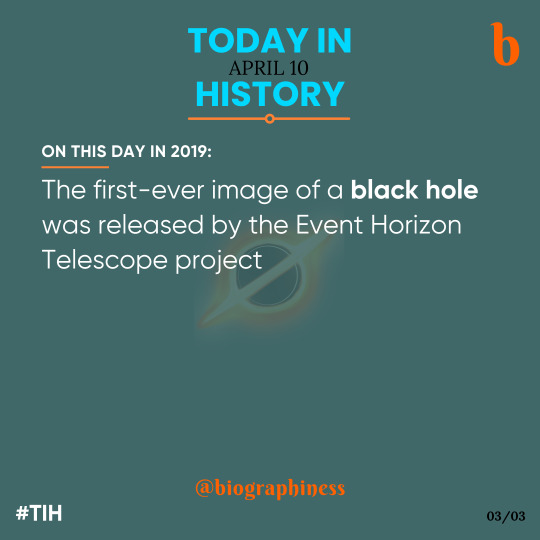
📌🚢🌌On this day on April 10 in history: Walter Hunt patented the safety pin, the Titanic set sail on its maiden voyage, and the first-ever black hole image was revealed!🧷🚢🔭
Follow👉 @biographiness
#Biographiness#Biograghines#TodayInHistory#TIH#onthisday#OTD#HistoryEvents#DailyHistory#HistoryFacts#April10#HistoryMatters#History#Innovation#TitanicVoyage#CosmicDiscovery#SafetyPin#WalterHunt#Titanic#HistoricVoyages#MaidenJourney#BlackHole#SpaceExploration#EventHorizon#AstroMilestone
2 notes
·
View notes
Text
Exoplanets: The Search for Alien Worlds and Extraterrestrial Life (Part2)
Do you remember gazing up at the stars as a child, and wondering if someone was watching you? Well, get ready, space explorers! We’re about to embark on a cosmic journey to alien worlds beyond our solar system. Welcome to the fascinating realm of exoplanets — our best bet yet in the search for extraterrestrial life! What Are Exoplanets? Exoplanets are planets orbiting stars other than our sun.…
#AlienWorlds#AreWeAlone#Astrobiology#CosmicDiscovery#Exoplanets#ExtraterrestrialLife#GoldilocksZone#HabitablePlanets#JWST#SpaceExploration
0 notes
Text
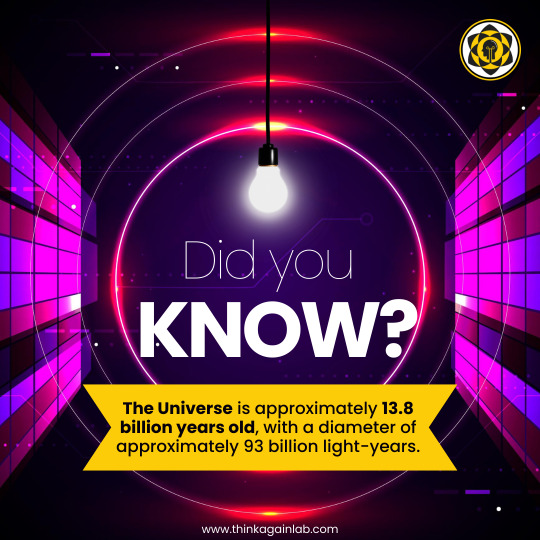
Ready to uncover the vastness of time and space? 🌌 Register now to journey through the mind-boggling expanse of the universe 🕰️🔭
For more information, you can visit our Instagram & Facebook, Or Contact us: +91 7908369443
#RegisterNow#UniverseExploration#CosmicWonders#TimeAndSpace#AstronomyAdventures#CosmicDiscovery#TechEnthusiasts#DiscoverTheUnknown#CosmicJourney#DidYouKnow#FunFacts#knowledgeispower#LearnSomethingNew#FascinatingFacts
0 notes
Photo
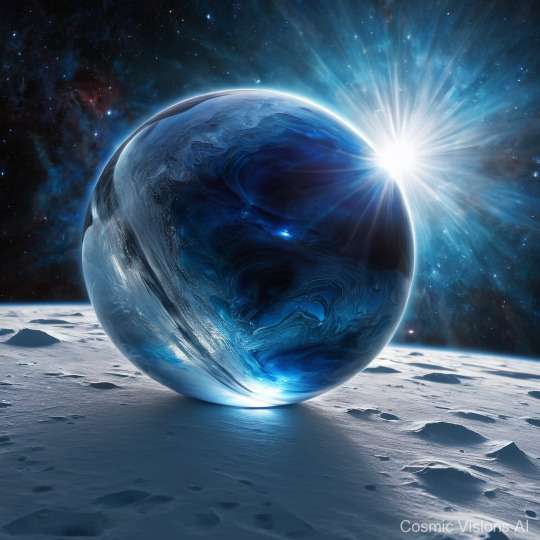
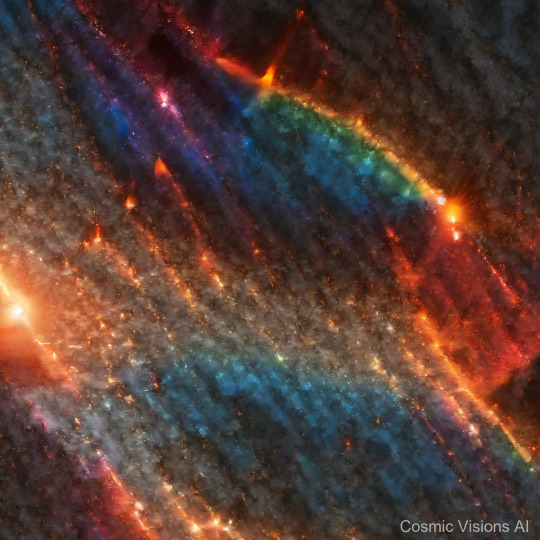
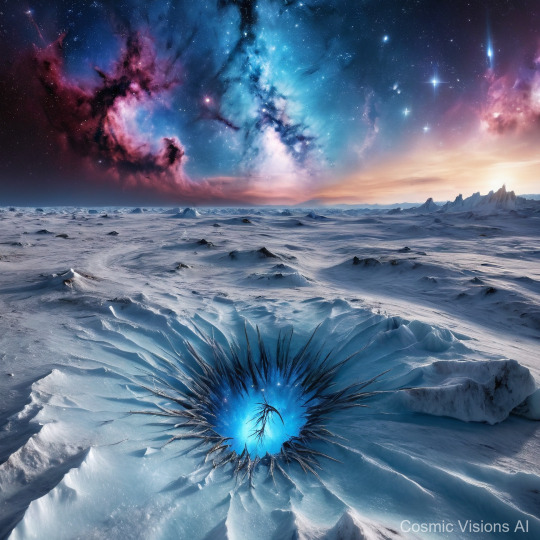
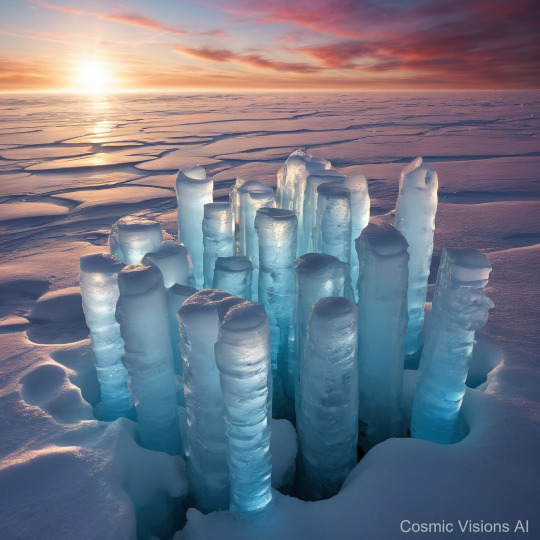
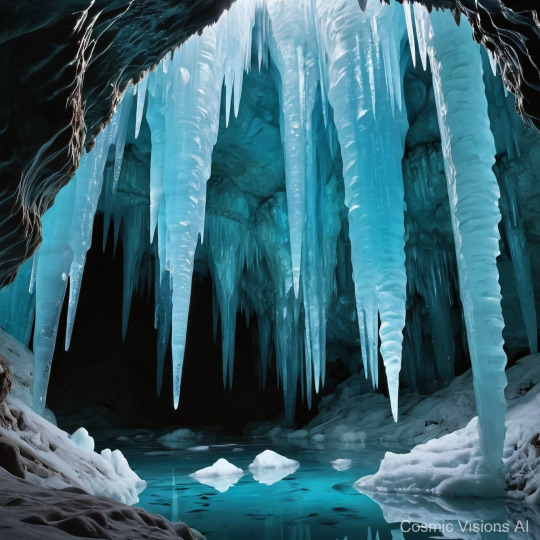
Planet Glacius V renders an awe-inspiring sight from space: a silvery-blue orb enveloped in thin, wispy clouds that dance over its icy surface. The planet is dominated by vast mountain ranges made almost entirely of translucent crystal ice, reflecting sunlight in a dazzling array of sparkles that can be seen even from orbit. On the surface, the conditions are harsh and unyielding. The sky, a pale mirror of the ice below, often erupts with fierce, icy storms that sweep across the towering peaks of the crystal mountains, shaping and reshaping the landscape. These mountains, some rising over four kilometers high, possess a brittle beauty, their jagged edges and smooth facades crafted by the relentless wind. The atmosphere, though thin, carries a constant chill, with temperatures plunging far below zero, preserving the planet's frozen state. Glacius V’s unique geological processes result in natural phenomena rarely seen elsewhere, making it a jewel in the cold belt of its star system.
#CrystalIceMountains#AstroPhotography#GalacticMountains#SpaceScapes#DeepSpacePhotography#IceFormations#OuterSpaceWonders#CelestialBeauty#FrozenAstroWorlds#CosmicDiscoveries
0 notes
Video
youtube
Does Dark Energy Really Exist? Timescape Model Explained
#youtube#DarkEnergy TimescapeModel Cosmology SpaceMysteries UniverseExpansion Astrophysics ScienceExplained CosmicDiscovery DarkMatter SpaceExplorati
0 notes
Video
youtube
Is the Mysterious 9th Planet Real? Alien Life & Solar System Secrets Rev...
#youtube#PlanetNine Astronomy Nibiru SolarSystemMystery SpaceExploration HiddenPlanet CosmicDiscovery SpaceScience UniverseSecrets Pluto
0 notes
Text
youtube
The space rock that once sparked global concern over a potential deadly collision has now been fully revealed — and it’s huge. Thanks to the James Webb Space Telescope, we now have our first detailed images of this celestial giant. While it no longer poses a threat, its sheer size reminds us how important space monitoring is.
New Scientists Awards
Nomination Link: https://newscientists.net/award-nomination/?ecategory=Awards&rcategory=Awardee
Web Visitors: https://newscientists.net/
For Enquiry: [email protected]
#sciencefather #scientist #scienceinnovation #researchexcellence #scientificbreakthrough #newscientistsawards #JWST #WebbTelescope #NASA #NASA #JamesWebb #AsteroidAlert #SpaceNews #Astronomy #PlanetaryDefense #NASAWebb #CosmicDiscovery #AsteroidWatch #DeepSpace#deepspace
Get Connected Here:
=================
Twitter: https://x.com/awards67811
Instagram: https://www.instagram.com/afreen202564/
blogger: https://www.blogger.com/blog/posts/8014336030053733629?hl=en&tab=jj
Pinterest: https://in.pinterest.com/scienceawards/
0 notes
Text
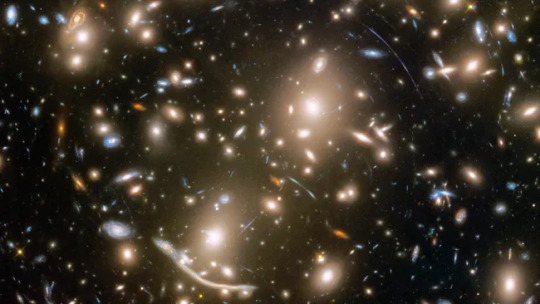
'Our model of cosmology might be broken': New study reveals the universe is expanding too fast for physics to explain
A recent study has revealed a puzzling discrepancy in our understanding of the universe’s expansion rate, suggesting that our current cosmological models may need a significant overhaul. The crux of the issue lies in the Hubble constant (H₀), a measure of the universe's expansion rate, which appears to differ depending on how it is calculated.
However, these two methods yield conflicting results. The CMB method, based on data from missions like Planck, estimates H₀ to be around 67.4 kilometers per second per megaparsec (km/s/Mpc). In contrast, local measurements consistently suggest a higher value of approximately 73 km/s/Mpc. This "Hubble tension" implies a difference of around 10%, far exceeding experimental uncertainties and statistical errors.
The implications of this discrepancy are profound. If both methods are accurate, it means our current model of cosmology, based on the Lambda Cold Dark Matter (ΛCDM) framework, is incomplete or incorrect. ΛCDM assumes a universe dominated by dark energy, dark matter, and ordinary matter. The tension hints at potential new physics, such as unknown interactions in the early universe, exotic forms of dark energy, or a need to revise general relativity on cosmic scales.
Several proposed solutions are under investigation. These include modifications to the standard model of particle physics, the existence of new particles, or errors in our understanding of cosmic distance measurements.While the debate continues, the Hubble tension underscores the dynamic and evolving nature of cosmology. The resolution of this mystery could reshape our understanding of the universe's origin, structure, and ultimate fate, paving the way for groundbreaking discoveries in fundamental physics.While the debate continues, the Hubble tension underscores the dynamic and evolving nature of cosmology. The resolution of this mystery could reshape our understanding of the universe's origin, structure, and ultimate fate, paving the way for groundbreaking discoveries in fundamental physics.
#Cosmology #HubbleTension #UniverseExpansion #Astrophysics #BigBangTheory #DarkEnergy #HubbleConstant #ScienceNews #SpaceScience #PhysicsMystery #CosmicMicrowaveBackground #AstronomyLovers #NewPhysics #CosmicDiscovery #StandardModel #DarkMatter #SpaceExploration #ScienceResearch #PhysicsResearch #CosmologyResearch #ScienceInnovation #AstrophysicsResearch #ResearcherLife #SpaceScienceResearch #STEMResearch #ScientificDiscoveries #ScienceExploration #ResearchAndDevelopment #ScienceCommunication #FutureOfScience #AcademicResearch #ScienceForTheFuture #ScienceEducation #ResearchInspiration #WomenInScience #PhysicsLover #AstronomyResearch
International Young Scientist Awards Website link: youngscientistawards.com Nomination Link: https://youngscientistawards.com/award-nomination/?ecategory=Awards&rcategory=Awardee Contact Us: [email protected] _________________________________________________________________________________________________________ Social Media: Twitter : https://twitter.com/youngsc06963908 Linkedin- : https://www.linkedin.com/in/shravya-r... Pinterest : https://in.pinterest.com/youngscienti... Blog : https://youngscientistaward.blogspot.... Tumblr : https://www.tumblr.com/blog/shravya9v
0 notes
Text
Brightest object ever found by Astronomers!
Discovery Alert! In a discovery announced on Feb 19, 2024 Astronomers unveil the universe's brightest phenomenon - quasar J059-4351, powered by a supermassive black hole. Discover how ESO's Very Large Telescope captured this cosmic marvel, shedding light on its unprecedented luminosity and rapid growth. Read the full article here -
Unveiling the Universe's Brightest Phenomenon - Quasar J0529-4351
#SpaceExploration #CosmicDiscovery #ESO #QuasarJ0594351
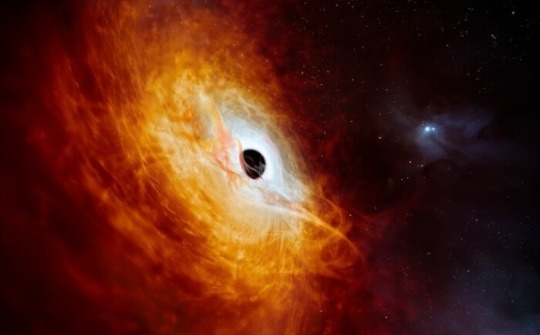
53 notes
·
View notes
Video
Cosmic Microwave Background: A Brief Journey #cosmicdiscoveries #spacedo...
0 notes
Text
What is in the Center of the Universe? | Q&A
What is in the Center of the Universe? | Q&A
According to current scientific understanding, there is no center of the universe. The universe is believed to have originated from a single point in space-time known as the Big Bang, which occurred roughly 13.8 billion years ago. Since then, the universe has been expanding in all directions uniformly, and there is no specific point or location that can be identified as the center of this expansion. Instead, all points in the universe appear to be moving away from each other, which creates the illusion that we are at the center of the universe from our perspective. However, this is only a result of our limited observational…
READ MORE https://www.doolly.com/qa/what-is-in-the-center-of-the-universe-qa
what is at the center of the universe? | what lies at the heart of the universe? | what can be found at the center of the cosmos? | is there a center to the universe? | does the universe have a central point? | where is the center of the universe located? | what exists at the middle of the universe? | is there a specific point at the center of the universe? | what occupies the center of the universe? | what sits at the center of the universe? | is there a focal point of the universe? | what constitutes the center of the universe? | what represents the center of the universe? | is the center of the universe a physical location? | what is positioned at the center of the universe? | where does the universe converge?
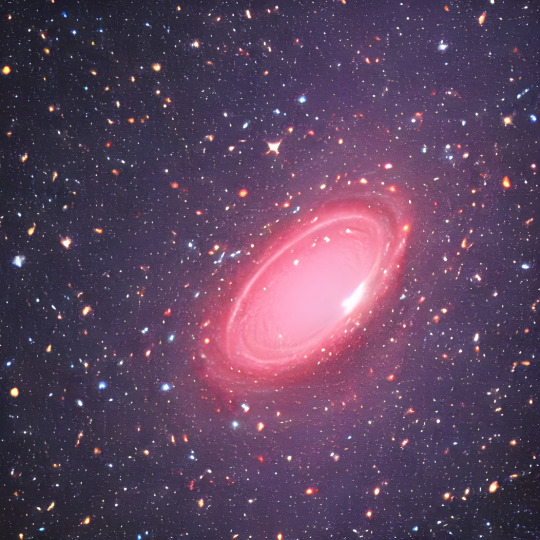
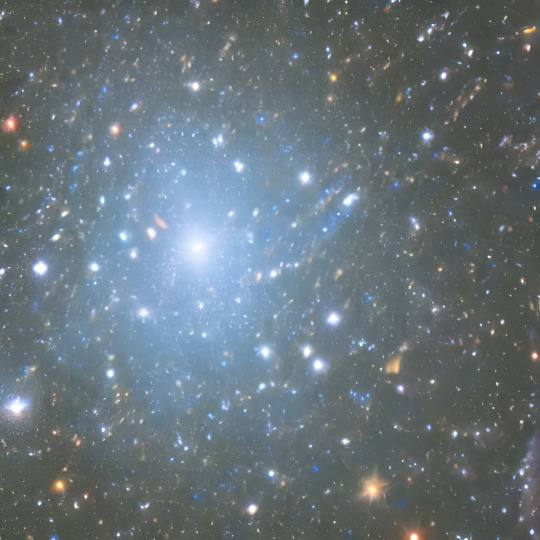
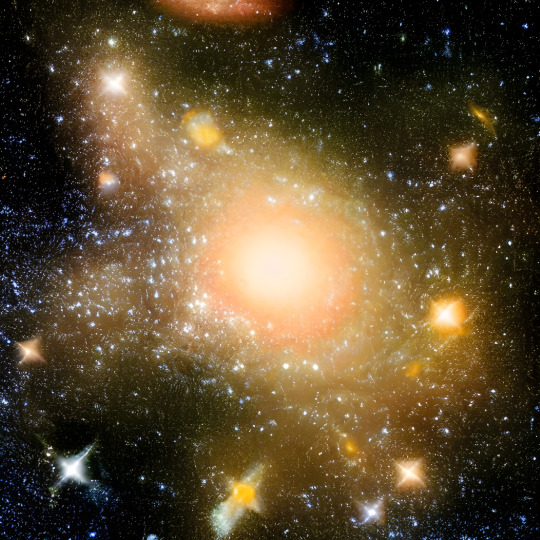

#CenterOfTheUniverse#CosmicWonder#UniverseExploration#GalacticJourney#BeyondOurWorld#CosmicDiscovery#OuterSpaceAdventures#UniverseMysteries#CosmicWonders#InfiniteUniverse#CosmicJourney#UniverseAwe#ExploringTheUniverse#SpaceDiscovery#CosmicMarvels#AstronomyLife#CosmicBeauty#StarrySkies#CelestialWonders#GalacticAdventures#AstronomyLove#CosmicHorizon#CosmicInspiration#DiscoveringTheUniverse#UniverseWonders#SkyGazing#CosmicMarvel#CosmicExpanse#ExploringSpace#CosmicKnowledge
0 notes
Text


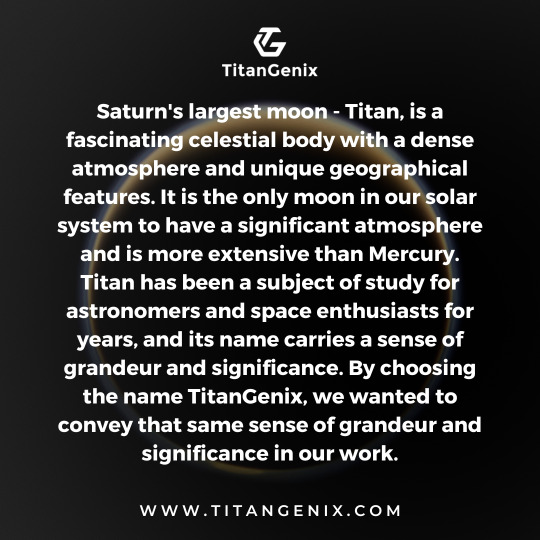

🌌🚀 Why "TitanGenix"? Let us take you on a journey through the cosmos! Our name is inspired by Saturn's largest moon - Titan. Much like Titan's mysterious atmosphere and potential for life, we strive to explore new digital frontiers and unlock endless possibilities for your brand. We're on a mission to empower businesses with out-of-this-world solutions. Join the TitanGenix odyssey today!
Saturn's largest moon - Titan, is a fascinating celestial body with a dense atmosphere and unique geographical features. It is the only moon in our solar system to have a significant atmosphere and is more extensive than Mercury. Titan has been a subject of study for astronomers and space enthusiasts for years, and its name carries a sense of grandeur and significance. By choosing the name TitanGenix, we wanted to convey that same sense of grandeur and significance in our work.
Titan, Saturn's largest moon Photo credit: @NASA
🌟✨ #TitanGenix #Titan #Inspiration #DigitalAgency #OutOfThisWorld #DigitalMarketing #BrandEmpowerment #CosmicInspiration #Dragonfly #Moon #SolarSystem #Saturn #Astrobio #Science #NASA #ExploreTheCosmos #DigitalFrontiers #UnleashPossibilities #BeyondBoundaries #InnovativeSolutions #BusinessEmpowerment #TitanOdyssey #SpaceEnthusiasts #Astronomy #EndlessPossibilities #BrandGrowth #Grandeur #Significance #Fascinating #CelestialBody #UniqueFeatures #SpaceMission #SpaceExploration #SpaceTechnology #SpaceInnovation #SpaceScience #SpaceVenture #SpaceAdventures #SpaceJourney #GalacticEmpowerment #CosmicVision #InterstellarAdventure #BeyondImagination #CosmicFrontiers #CosmicDiscovery #ExploreNewWorlds #CosmicWonder #CosmicExperience #CosmicHorizon
#design#creative#agency#designagency#behance#designcompany#designstudio#digitaltrends#titangenix#designinspiration#digitaldesign#metaverse#sanfrancisco#socialmedia#dribbble#ui#uidesign#uiux#uxdesign#community#nasa#space#titan#saturn
0 notes
Photo




Planet Luminara, observed from space, appears as a medium-sized celestial body swathed in a thin mist of violet and soft blues. Its atmosphere, predominantly composed of nitrogen and trace noble gases, casts a mysterious aura over its surface. Below this gaseous envelope lies Luminara’s most mesmerizing feature: vast, sprawling caverns of luminescent crystals. These subterranean wonders are accessible through naturally occurring crevices scattered across the planet's rocky, barren exterior. The surface, largely devoid of vegetation, experiences extreme temperature fluctuations that range from blistering heat during the day to freezing cold at night due to the thin atmosphere. Within the caverns, the conditions are starkly different. The temperature remains constant, shielded from the surface extremes. The walls, floors, and ceilings of these caves are encrusted with crystals that emit a soft, radiant light, covering the spectrum from deep amethyst to a bright, icy blue. This bioluminescence is not merely a visual wonder but also plays a crucial role in the caves' micro-ecosystem, supporting a variety of microscopic life forms. Meteorological observations confirm the absence of precipitation on the surface, yet the air within the caves remains surprisingly humid, suggesting an underground hydrosphere that sustains the crystal growth and fosters the unique micro-biomes. Luminara’s vibrant crystal caverns not only present a stunning tableau of natural mineral beauty but also offer a rare glimpse into a stable, yet delicate, underground ecosystem thriving in stark contrast to its barren surface.
#VibrantCrystalCaverns#DeepSpaceGems#GalacticJewels#CelestialCaveExploration#NebulaCrystalHues#SpacePhotography#AstronomyAdventures#StellarBeauty#CosmicDiscoveries#LunarCaverns
1 note
·
View note